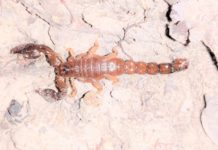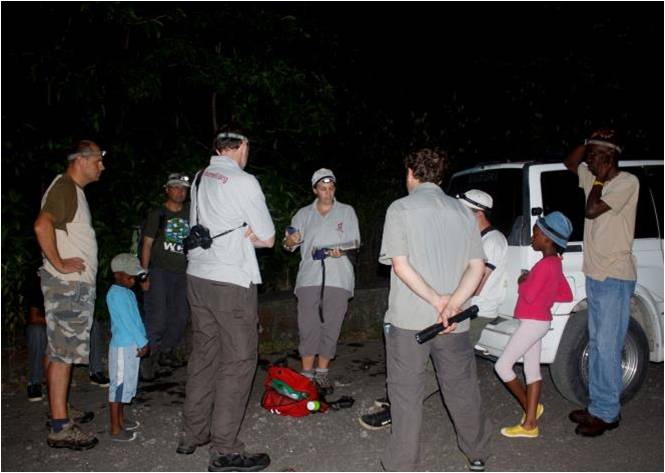Day three of the workshop and we had some hard work to do today. Yesterday was an important day as the group worked together to determine the vision and the goal for the recovery plan. The decision was also made to extend this recovery plan to a time frame of 20 years. The day finished with creating problem trees which are chains of cause and effect problems that might prevent us from achieving our overall goal. The problem trees were divided into five key areas: small populations of mountain chickens both in the wild and in captivity; disease threats to the mountain chicken with chytrid being the biggest current disease problem; habitat loss including through threat of climate change, volcanic activity and development; climate change influencing behavioural changes as well changes in the habitat; invasive species and the threats they pose to the surviving frogs and institutional and political capacity including the threat of lack of funding for the plan.
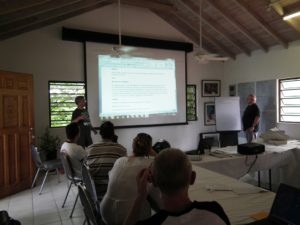
The aim of today was flip each of the problems on the problem trees and create solutions which then form a solution tree. These solution trees were arranged into a hierarchical structure and the head of each chain was to provide an objective for the plan. The objectives, like the goal, are supposed to be SMART (Specific, Measurable, Achievable, Relevant and Time-bound) and are all meant to be working towards the overall goal. Each group that were working on the problem trees were also tasked with coming up with an objective for discussion and it took participants the rest of the day to finalise each objective for the plan.
But all the hard work is not limited to the daytime… In the evening a visit to the release site where the past three experimental releases of mountain chickens took place was organised. Participants from the workshop were invited to take a trip into the site to search for any frogs that may have survived from the group of individuals that were released in November 2012.
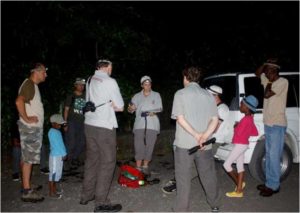
Amazingly, despite not seeing any surviving frogs for a couple of weeks, our luck was in and a male was heard and caught by primary field assistant Calvin ‘Blacka’ Fenton. The male was looking very healthy and was showing signs of being in full breeding condition. The usual data was taken including weight, snout to vent length and leg length along with two skin swabs to test for the chytrid fungus. It was a great opportunity to show the visitors and the experts exactly what protocols we were using in the field and just how tricky it can be to spot these well camouflaged animals. The whole group were very excited and it was a great motivational booster for the final day of the workshop the next day!
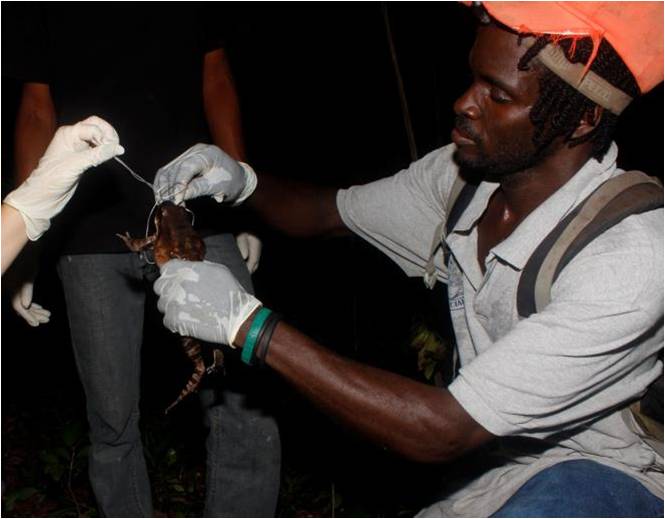
By Sarah-Louise Adams, Project Coordinator




